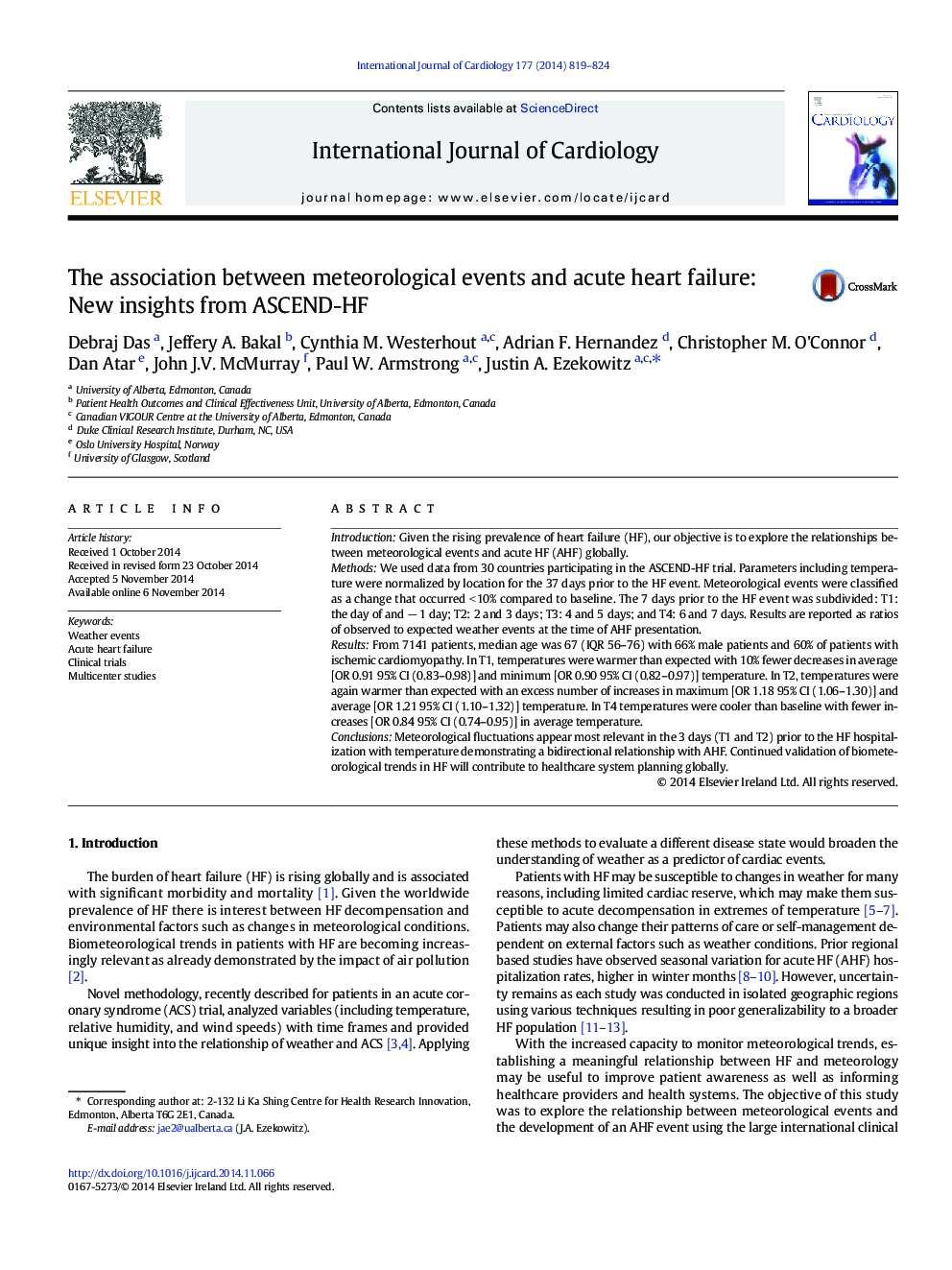| Article ID | Journal | Published Year | Pages | File Type |
|---|---|---|---|---|
| 5969512 | International Journal of Cardiology | 2014 | 6 Pages |
IntroductionGiven the rising prevalence of heart failure (HF), our objective is to explore the relationships between meteorological events and acute HF (AHF) globally.MethodsWe used data from 30 countries participating in the ASCEND-HF trial. Parameters including temperature were normalized by location for the 37 days prior to the HF event. Meteorological events were classified as a change that occurred < 10% compared to baseline. The 7 days prior to the HF event was subdivided: T1: the day of and â 1 day; T2: 2 and 3 days; T3: 4 and 5 days; and T4: 6 and 7 days. Results are reported as ratios of observed to expected weather events at the time of AHF presentation.ResultsFrom 7141 patients, median age was 67 (IQR 56-76) with 66% male patients and 60% of patients with ischemic cardiomyopathy. In T1, temperatures were warmer than expected with 10% fewer decreases in average [OR 0.91 95% CI (0.83-0.98)] and minimum [OR 0.90 95% CI (0.82-0.97)] temperature. In T2, temperatures were again warmer than expected with an excess number of increases in maximum [OR 1.18 95% CI (1.06-1.30)] and average [OR 1.21 95% CI (1.10-1.32)] temperature. In T4 temperatures were cooler than baseline with fewer increases [OR 0.84 95% CI (0.74-0.95)] in average temperature.ConclusionsMeteorological fluctuations appear most relevant in the 3 days (T1 and T2) prior to the HF hospitalization with temperature demonstrating a bidirectional relationship with AHF. Continued validation of biometeorological trends in HF will contribute to healthcare system planning globally.
